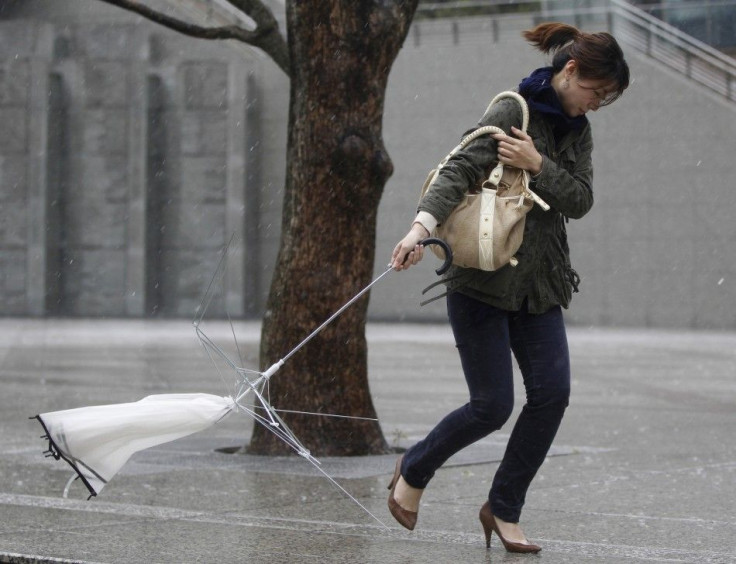Japan Storm 2012: Strongest Squall Since 1959 Causes Travel Chaos

A storm packing typhoon-strength winds pummeled Japan on Tuesday, cancelling flights, paralyzing traffic, and causing at least two deaths.
The low pressure system in the Sea of Japan (East Sea) packed winds of 67 miles per hour with gusts over 90 miles per hour. Two people were killed in separate warehouse collapses in Toyama in the north and Kagawa in the south and public broadcaster NHK put the tally of those injured at 160.
The storm, said to be the most powerful to hit Japan since 1959, knocked out power for more than 10,000 households and businesses, forcing many stores and major companies like Sony, Canon, and Fujitsu to close early. The dramatic winds also halted commuter trains and grounded more than 600 flights in and around Tokyo.
Japan Airlines canceled 288 domestic and seven international fights affecting over 32,000 people. All Nippon Airways grounded 336 domestic flights affecting nearly 40,000 more. The disruption represented 35 and 40 percent of the airlines' daily services respectively.
On the ground, the nation's main bullet train, linking Tokyo to Osaka, was delayed after a brief suspension of service. Many routes with East Japan Railways to the eastern and northern regions including Tokyo were also canceled. One train carrying some 170 passengers was reportedly stranded for seven hours due to heavy wind on a bridge linking the main islands of Honshu and Shikoku.
Meanwhile traffic jams were many in badly hit Toyama as trucks toppled over and debris cluttered roads.
The Japan Meteorological Agency urged citizens to stay indoors until the storm passed.
This is like the core of a typhoon, but it is staying for a long time. A typhoon usually moves rather quickly, a spokesman said in an emergency news conference.
Winds as strong as this are very rare, he said.
The spokesman also cautioned that strong winds would move northwards producing potentially dangerous waves, landslides, and flooding.
In particular, ferocious winds are expected at sea (in the north) on the Sea of Japan side. Please be extremely wary of violent winds and high waves.
The agency further warned of the threat of tornadoes over western Japan.
The storm comes at a bad time for the nation as it works to recover from a major earthquake and Tsunami one year ago that left a confirmed 15,850 dead, 6,011 injured and 3,287 missing. It was the most powerful earthquake known to have hit Japan and one of the five most powerful earthquakes in the world since modern record-keeping began in 1900. Then in September Typhoon Talas struck, killing 67 more. It was nation's deadliest storm in seven years.
READ ALSO:
Japan Earthquake & Tsunami Anniversary: The Healing Power of Paper Cranes
Fiji Floods 2012: Flights Out Resume Amid Disease Warnings at Evacuation Centers
Azamara Quest: Fire-Damaged Cruise Reaches Malaysia, Crew Praised
© Copyright IBTimes 2024. All rights reserved.






















